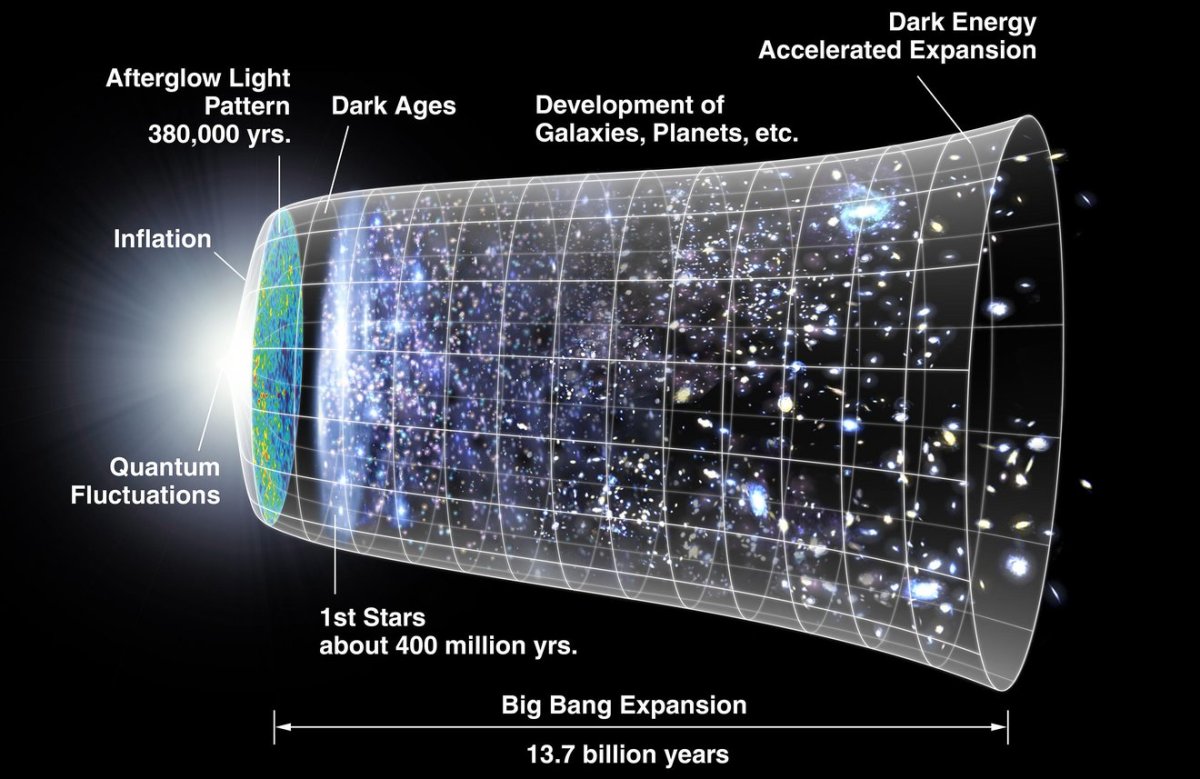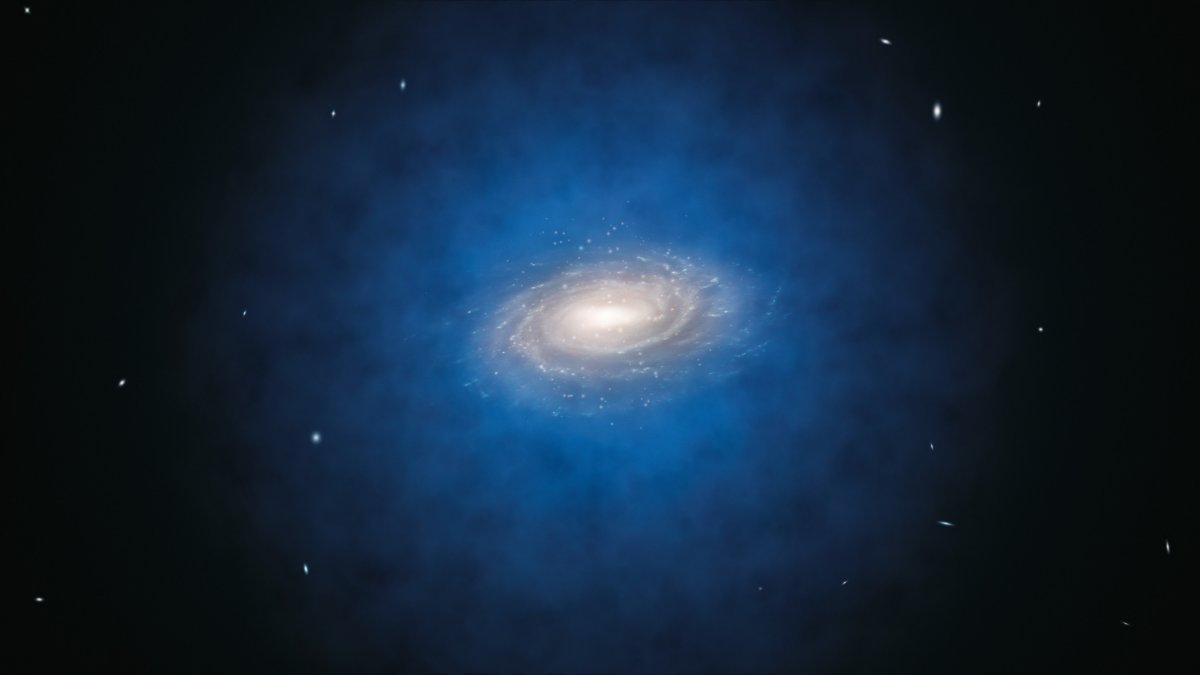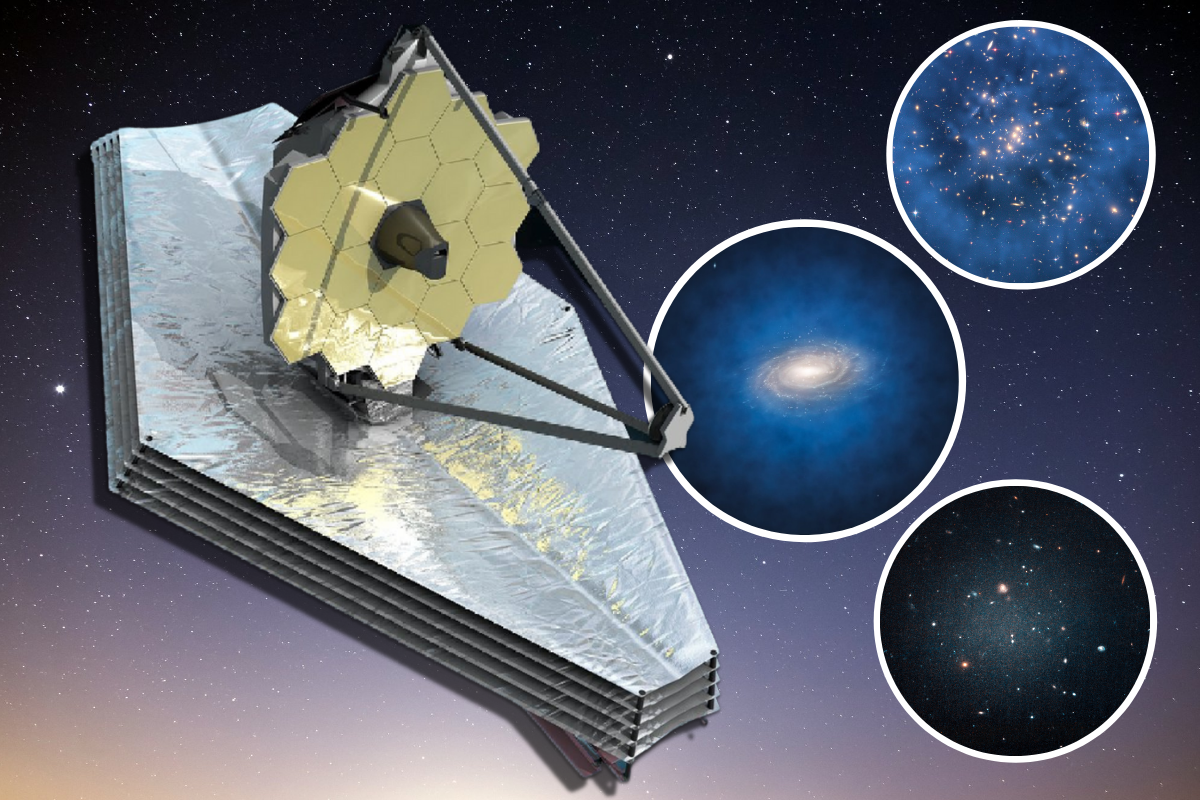Set to launch on Christmas Eve, the James Webb Space Telescope (JWST) promises to revolutionize our understanding of the cosmos by enabling scientists to look further back in time than ever before.
The telescope, which was first proposed in 1989 and thus far has cost about $10 billion, will have the ability to stare deeper into space than previous telescopes. This is thanks to its 6.5-meter light-gathering primary mirror, which is almost three times the size of that of the Hubble Space Telescope.
Because of the time that light takes to travel to us, that means we see objects as they were in the past. For objects that the JWST will be able to image, that means seeing the 13.8 billion-year-old Universe as it was as far back as 100 million years after the Big Bang.
This means this new powerful space telescope could help scientists finally tackle the mystery of dark energy, the force that is causing the Universe to expand at an accelerating rate.
The JWST may also be able to help place constraints on the nature of dark matter, a substance that is not made of protons and neutrons, like most things we see around us on a day-to-day basis, and that doesn't react to light like everyday matter.
However, dark matter does interact with gravity and provides the influence that prevents the galaxies from flying apart as they rotate.
Though unrelated and providing almost contradictory effects—with dark matter pulling galaxies together as dark energy pushes the Universe apart—these aspects of the Universe are often collectively known as "the dark universe."
Individually dark energy and dark matter represent physics' most pressing problems as they account for as much as an estimated 95 percent of the "stuff" that fills our Universe.
Dark Energy
By allowing scientists to see cosmic explosions called Type-I supernovas farther into the Universe, and thus further back in time than ever before, the JWST should provide a better picture of its expansion.
This type of supernova, the result of the explosion of a carbon-oxygen-rich white dwarf in a binary system caused by it greedily pulling material from its companion star, has light outputs so regular that they are called "standard candles."
Thanks to this uniformity, these standard candles have been used by astronomers for decades to measure distances. But in the late 1990s, observations of distant examples told scientists something shocking about the Universe.
In the early 20th century, the discovery by astronomer Edwin Hubble that the Universe was expanding came as a major shock to Albert Einstein. The great physicist had believed, like the scientific community at large, that the Universe was static and unchanging.
He had even introduced a factor to his groundbreaking equations of general relativity, called the cosmological constant, to prevent them from predicting a dynamic and changing cosmos.
This discovery turned physics on its head, but not as much as the revelation in the late 1990s that the Universe was not just expanding, but was doing so at an accelerating rate.
In 1998, astronomers discovered that the farther away a Type-Ia supernova was, the greater an effect called redshift—the stretching of the wavelength of light towards the red end of the electromagnetic spectrum as it moves away from an observer—was.
This told space researchers that the farther away objects like galaxies or supernovas are from us, the more quickly they are receding and thus that the expansion of the universe is accelerating.
What is responsible for this acceleration is currently unknown. Researchers have simply given it the title "dark energy."
"Dark energy is a subtle, smooth, and uniform component accounting for no less than 70 percent of the total amount of matter-energy of the Universe," Luz Ángela Garcia, a cosmologist at the Universidad ECCI, Colombia, told Newsweek. "We use dark energy to provide an answer to the observed expansion rate today and explain with a robust model the large-scale structure of the Universe seen by wide-area astronomical surveys [observations of the Universe at a large scale]."

Garcia currently researches possible "early dark energy" models (EDEs) that hint this force could have existed earlier than currently believed. The current thinking is that the early Universe's expansion was driven by other forces, but EDEs suggest dark energy was present in these periods but was less dominant.
She continued: "Thus far, our instruments have not detected dark energy. That means that there are many candidates that could be appropriate to describe this component."
Most of the current methods used to investigate dark energy rely on investigating how it influences the rate of expansion, also known as the Hubble parameter, at various points in the Universe's 13.8 billion-year history.
Garcia added that the Hubble parameter determines how the expansion of the Universe changes over time and is related to how we define distances in cosmology. That means that dark energy and its contribution to the Universe's energy and matter content play an important role in our large-scale structures like galaxies and in how the regions between them are distributed throughout space.
She said that JWST will play a relevant part in the study of this elusive element of the Universe by uniting with wide-area surveys conducted by two future space telescopes, the Euclid Telescope and the Nancy Grace Roman Space Telescope, set to launch in 2022 and May 2027 respectively.
Garcia continues: "The JWST will complement results obtained by these wide-area surveys by improving the estimation of the Hubble parameter today and refining the light curves from extremely Type-Ia supernovas in near-infrared light, one of the strengths of the JWST."
The JWST will also be able to track supernovas at much greater distances than past telescopes, possibly even observing the first of these cosmic explosions, helping us better observe and measure the expansion of the Universe and how it is changing.
Garcia said: "Optimistically, we will learn a great deal about the effect of dark energy at intermediate and great distances using observations from JWST. Besides, we do not know yet what new objects are there to be discovered and what they could tell us about the contents of the Universe."
The contents of the Universe which include dark matter.
Dark Matter
Examinations of early and distant objects may not just benefit the search for dark energy. It could also help better understand the nature of dark matter.
"Dark matter is the main form of mass in the Universe. We know that it is not made of the protons, neutrons, and electrons that make up ordinary matter," professor of physics and astrophysics at the University of California, Santa Cruz, Joel Primack, told Newsweek. "Dark matter makes up about 25 percent of cosmic density and does not emit or absorb light, so a better name for it would be non-luminous matter.
"Because we can detect dark matter only indirectly through its gravity, it has been difficult to determine what it is."

Observing how early galaxies evolved using the JWST could help astrophysicists, astronomers and cosmologists better understand the role dark matter played in these processes and could place constraints on models of this mysterious substance. The JWST will be particularly useful in studying the dark halos—shells of this mysterious substance that surround most galaxies—around early galaxies.
"Such early galaxies form in the first dark matter halos so by clarifying the nature of these early-forming gravitationally bound lumps of dark matter, JWST will constrain some theories on the nature of dark matter," said Primack.
He continued by explaining that this could help determine between competing models of dark matter, "warm" dark matter models that say this substance is made up of small rapidly moving particles, and cold dark mater models which put forward larger, slower moving particles.
So observing the abundance of these galaxies could help determine which set of models is accurate, and while not solving the dark matter mystery, setting researchers on a path that may lead to that solution.

Uncommon Knowledge
Newsweek is committed to challenging conventional wisdom and finding connections in the search for common ground.
Newsweek is committed to challenging conventional wisdom and finding connections in the search for common ground.
About the writer
To read how Newsweek uses AI as a newsroom tool, Click here.








